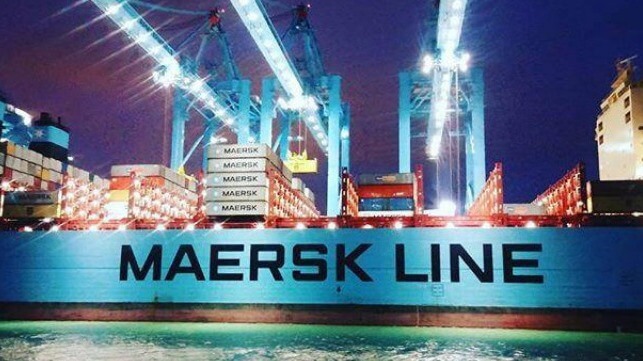Maersk Forecasts Container Volume Growth While Profits Decline in 2025

Despite continued global uncertainties, Maersk is forecasting the container market will grow by a healthy four percent in 2025 and that the company will remain at pace with the market. The company gave a positive outlook for 2025 after highlighting that 2024 was the third-best financial performance in its history.
Starting 2024, Maersk had issued a cautious note citing the factors disrupting the market and a collapse in rates that overtook the market in the latter part of 2023. Faced with the problems in the Red Sea, the prospects of dramatically higher costs, and a potential slowdown in the global economy, Maersk like its peers forecast a difficult year. Instead, the company highlights all three of its business segments performed well benefitting from a significant increase in freight rates, strong volume demand, and cost discipline.
Reporting financial results for 2024 today, Maersk dramatically outperformed analyst forecasts with earnings (EBIT) up 65 percent to $6.5 billion. Revenues from the ocean shipping business were over $37 billion for the year while total revenues across all the business were nearly $55 billion. Despite longer steaming distances for the routes going around Africa and increased fuel costs, it was able to stabilize operating costs and benefit from the higher freight rates.
“Our ability to navigate shifting circumstances and ensure steady supply chains for our customers was put to the test throughout 2024,” noted Vincent Clerc, CEO of A.P. Moller – Maersk. “We successfully capitalized on increased demand while enhancing productivity and rigorously managing costs — all of which contributed to our strong financial performance.”
Speaking with reporters, Clerc downplayed the focus on tariffs saying more of the outlook depends on how consumers react and demand. For the industry, he cites the continued imbalance in supply and demand as new, larger vessels continue to be delivered but he said the potential remains to largely offset the supply-side drivers with strong market demand.
The Red Sea and its impact on the market continues to be one of the largest uncertainties according to Maersk, which like all the major carriers, continues to divert around Africa. On the optimistic side, Clerc said they might see a mid-year return but noted that with increased capacity, rates were likely to decline and drive Maersk to the low end of its outlook. However, if the return to the Red Sea continues to be deferred till the end of the year, Maersk believes the market remains strong and it will be driven to the high end of its forecast.
Based on the uncertainties and the “considerable macroeconomic” issues, Maersk however foresees strong declines in profits in 2025. In the worst scenario, EBITDA could be at $6 billion which would be half 2024 levels. In the strongest case, the forecast calls for EBITDA of $9 billion which would still be below 2023 levels.
Investors were encouraged by the performance and did not show strong concern about the outlook. At one point during the day, they drove the stock price up by 10 percent and it settled up more than six percent on the day. Maersk is seen by many as an indicator not only for the industry but also for the broader economy and trade.
Management emphasized its ability to adapt to the market in what will be a challenging year. While the company remains committed to its strategy, it is also taking a large risk in its shipping operations as it abandons the alliance with MSC Mediterranean Shipping and begins a challenging transition to a new approach with an overhauled route system. Most of the first half of the year will be spent transitioning to the new Gemini Cooperation with Hapag-Lloyd which uses a hub and feeder system on its key routes. The goal is to drive schedule reliability with a goal of 90 percent on time believing it will differentiate the service and support higher freight rates due to the reliability of the service.
